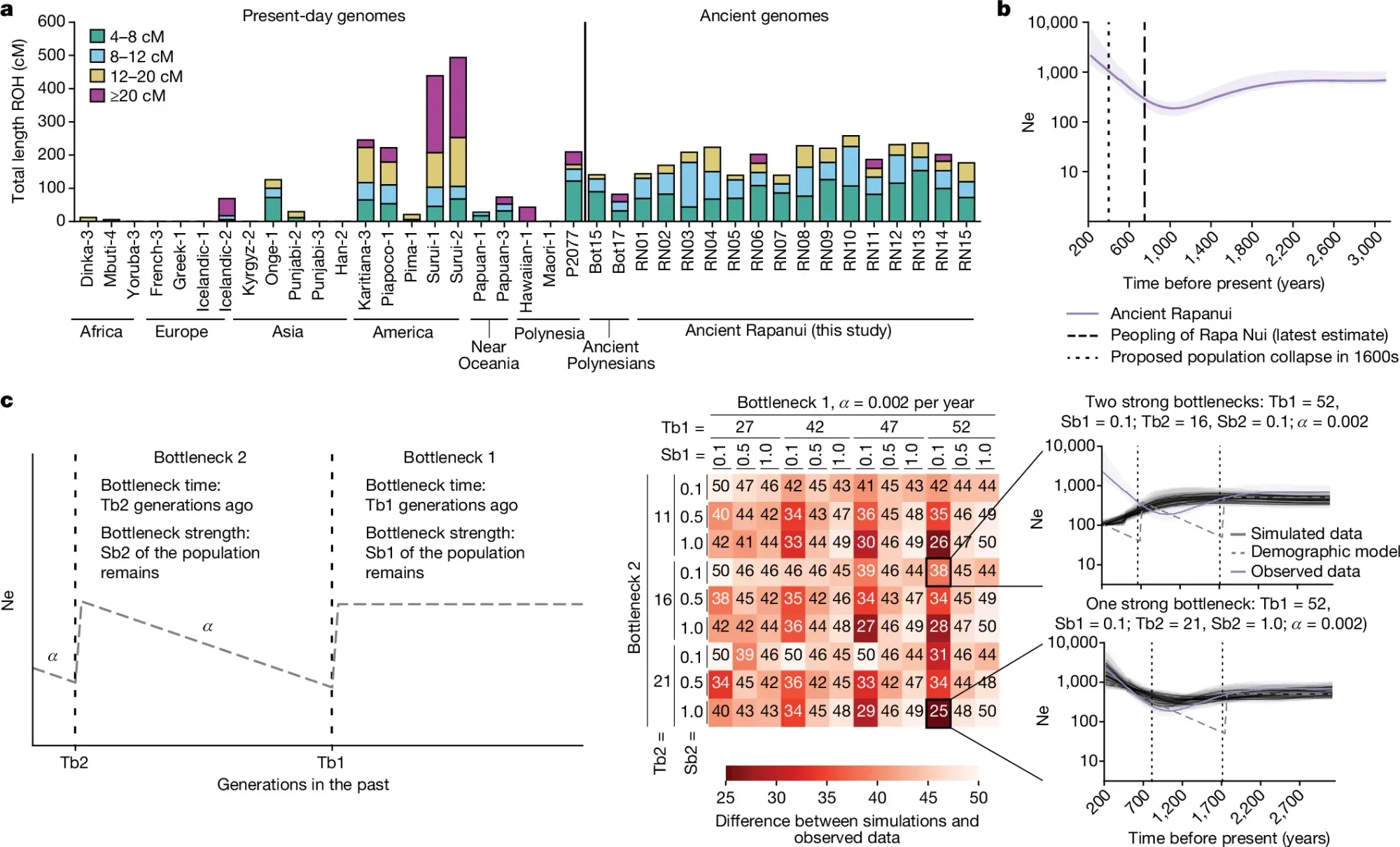A genetic investigation into the 'population collapse' at Easter Island
What caused the 'collapse' of the Rapanui population on Easter Island? Genetics is now setting the record straight.

Easter Island, or Rapa Nui, is in the eastern most corner of the triangular region of Pacific Islands that make up Polynesia.
Hawaii and New Zealand hold the other two corners.
With that in mind, it’s pretty clear that Polynesia is huge!
It also contains thousands of islands that have been inhabited by sea faring people for centuries.
But, it is thought that Easter Island was first settled in the 12th century and those settlers became known as the Rapanui.
These people developed a culture centered around the iconic giant stone moai statues that can be found all over the island.
The island is still inhabited today and is one of the most remote island populations known to exist, being 2,200 miles (3,500 km) from the coast of Chile in South America.
Prior to settlement, Easter Island was typical of many subtropical islands and the fossil record indicates that it was probably covered in broadleaf palm forests.
Today, many of those original species no longer exist and the island is covered in low vegetation leading some people to believe that the Rapanui mismanaged the ecosystem.
In 2005, a book was published hypothesizing that because of this ecocide (ecological suicide due to extreme deforestation), the Rapanui experienced a serious population collapse, and cannibalism led to a reduction of the population from approximately 15,000 inhabitants to 3,000.
Archaeologists were quick to point out that there was no credible evidence of a population collapse or cannibalism on the island outside of traditional religious rites.
They also highlighted that the palm forests were replaced with farm fields to support the growing population.
The only recorded evidence of a collapse was in the mid 1800’s when Peruvian slave traders raided it and removed or killed half of the population.
But this ecocide myth still persists today.
Thankfully, a recent paper in Nature finally puts it to rest.
To do this, researchers sequenced 15 ancient Rapanui genomes dated from 1670–1950 ce.
In the figure above they:
a) Compare regions of homozygosity (long regions >20cM (centimorgan) indicate more inbreeding) in other populations and show that the ancient Rapanui are similar to other modestly isolated populations and do not appear to have suffered a severe genetic bottleneck
b) Use the ancient genomes and population genetics to estimate the population size (not quantitatively - just looking for trends) of the Rapanui throughout their history and do not show a severe population collapse 600 years ago
c) Model the worst case population collapse scenarios to replicate the curves observed in the genome data (compare black lines to light purple line - right side) and show that the observed curve is most consistent with a single founder event at settlement (bottom graph) and not an ecocide driven population collapse in 1600 (top graph).

